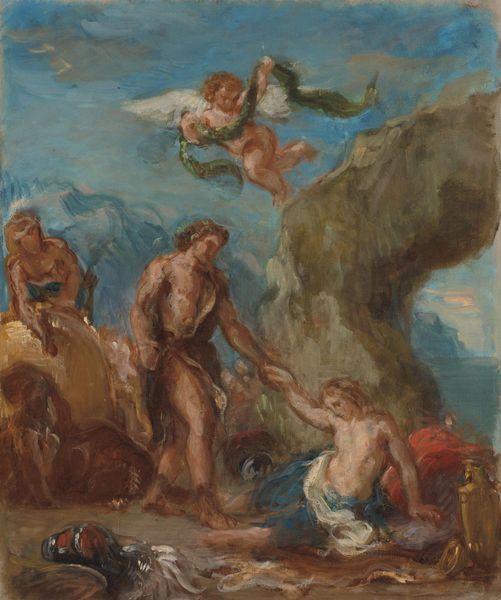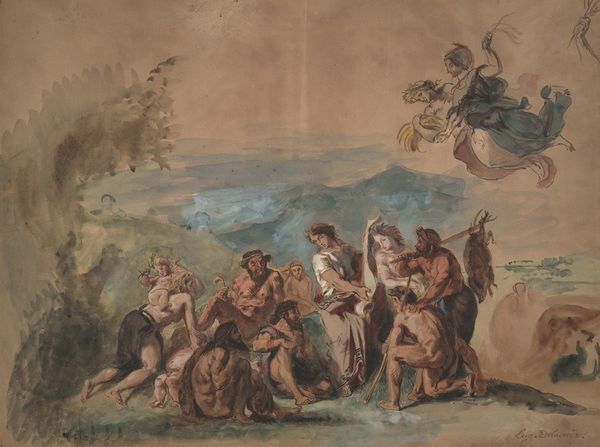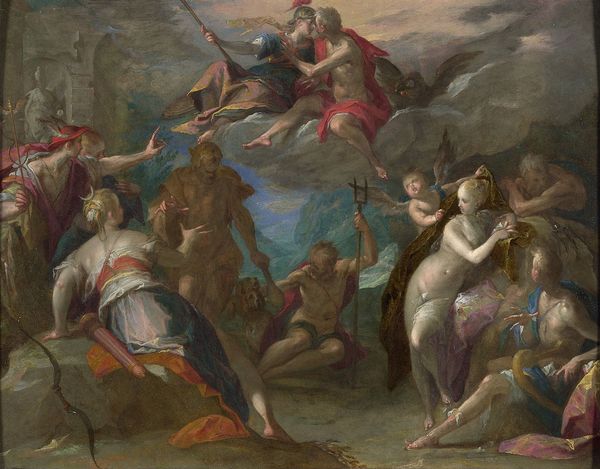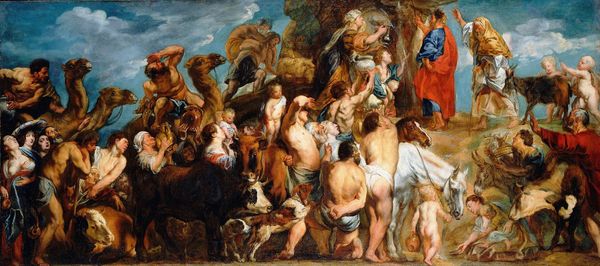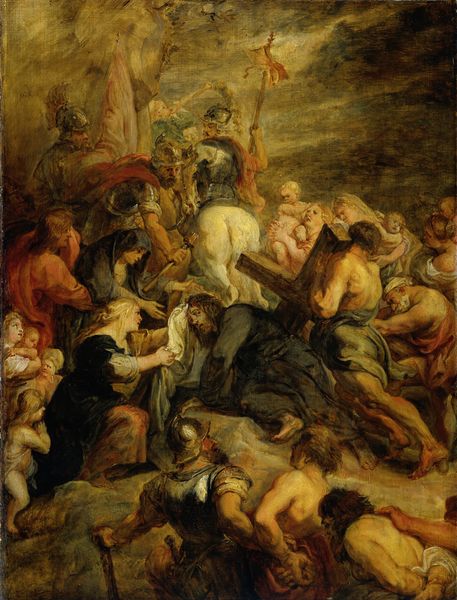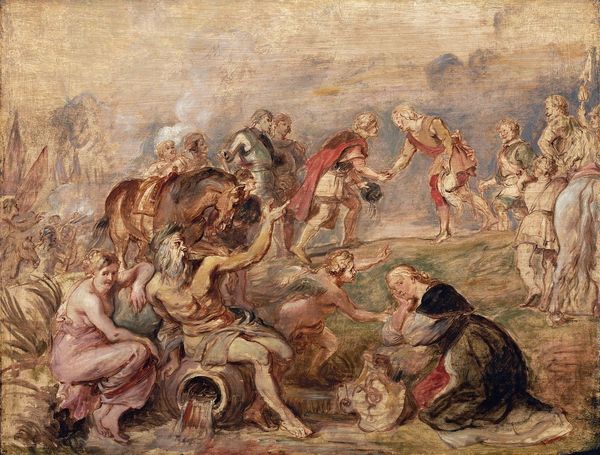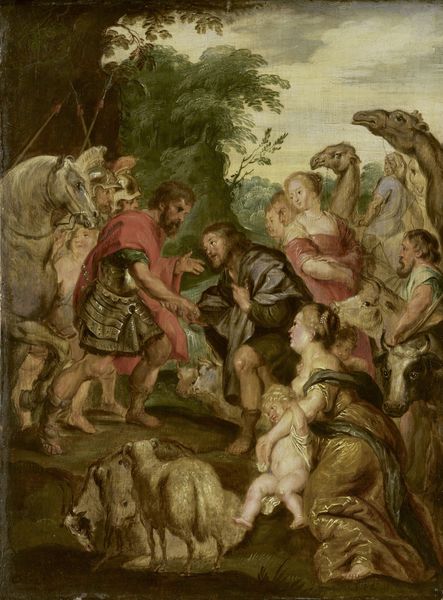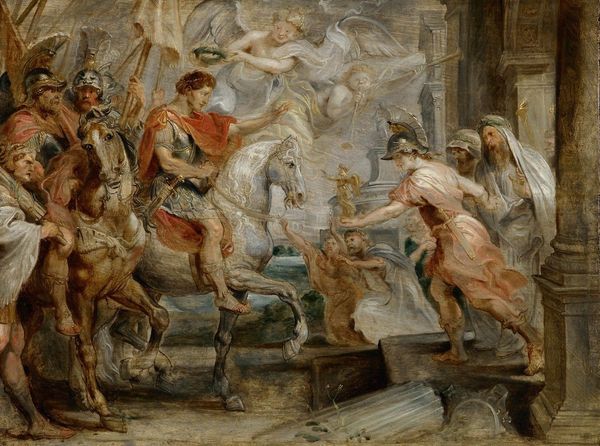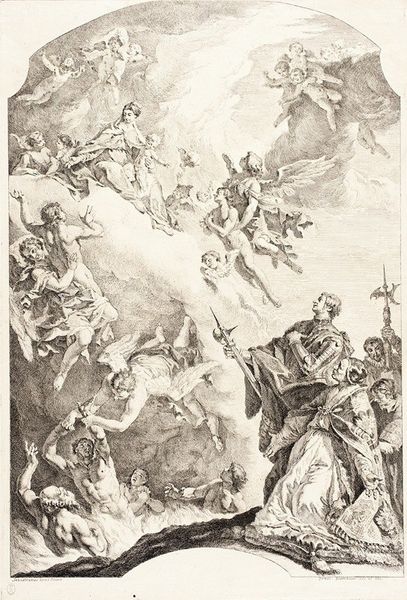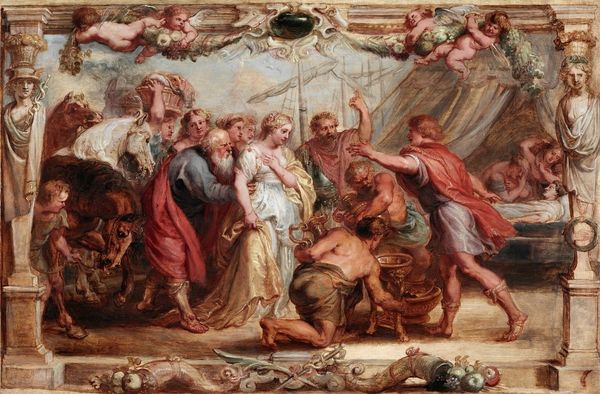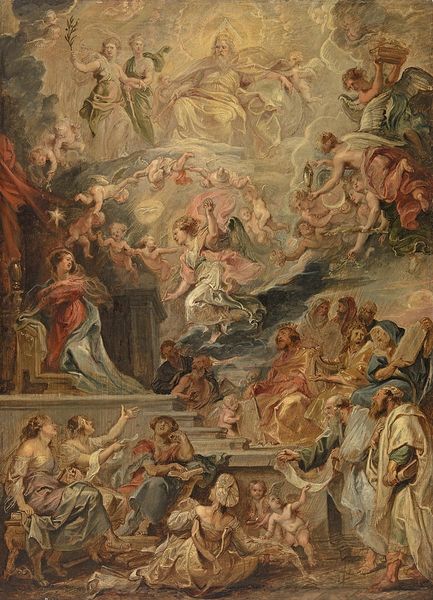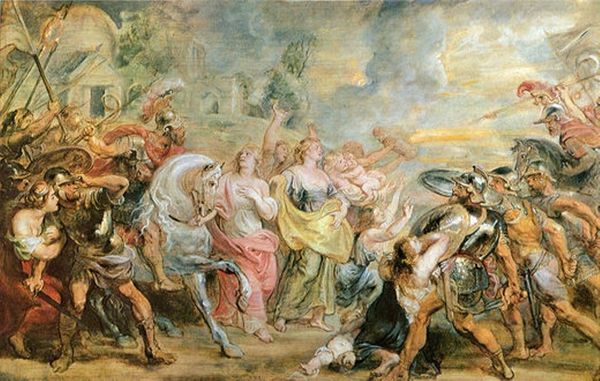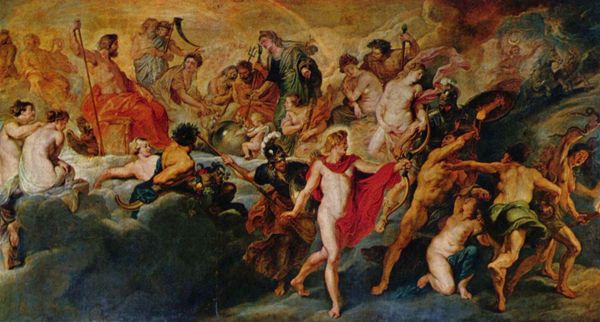
painting, oil-paint
baroque
painting
oil-paint
figuration
oil painting
painterly
history-painting
Copyright: Public Domain: Artvee
Editor: This painting, "The Martyrdom of Saint Paul" by Peter Paul Rubens, feels dramatic, almost theatrical, even in this small-scale oil study. There's a definite sense of movement and heightened emotion. How do you interpret this work in relation to the cultural context of its creation? Curator: Rubens, deeply entrenched in the visual language of his era, strategically utilizes this subject. The depiction of martyrdom was far from neutral; it was a powerful assertion of Counter-Reformation ideals. These images, commissioned by religious institutions, weren't simply about recounting history. They were powerful instruments of persuasion. Consider, how does the emotional intensity, the theatricality you mentioned, serve a purpose within this broader socio-political landscape? Editor: It seems designed to evoke a strong emotional response, making the viewer empathize with Saint Paul and, by extension, with the Catholic Church's teachings. The glorification of sacrifice almost becomes a form of propaganda. Curator: Precisely! It's crucial to recognize that paintings of this era weren't just beautiful objects for aesthetic contemplation; they were active participants in a larger ideological battle. Look at how the idealized figures, the divine intervention from above with angels offering a crown...how do those details reinforce a particular power dynamic? Editor: The crown certainly elevates the martyr above the earthly realm, reinforcing the authority of the Church and the promise of salvation. It's like a visual contract, where obedience is rewarded with eternal glory. Curator: Exactly. By understanding the public role of art in the 17th century, we can deconstruct these images beyond their surface level, to uncover the political messages embedded within. How might this knowledge affect our experience of viewing the painting? Editor: I guess it transforms the viewing experience from simply appreciating artistic skill to critically engaging with a historical artifact. Curator: Indeed. It prompts us to ask who is benefiting from this representation and what power structures are being reinforced. That is how we begin to contextualize and critically analyse a historical piece. Editor: This deeper analysis has broadened my perspective on Rubens' painting. It's far more than just a depiction of a historical event; it’s a powerful assertion of the Church’s authority.
Comments
No comments
Be the first to comment and join the conversation on the ultimate creative platform.
